Clare Waight Keller makes her mark at Givenchy
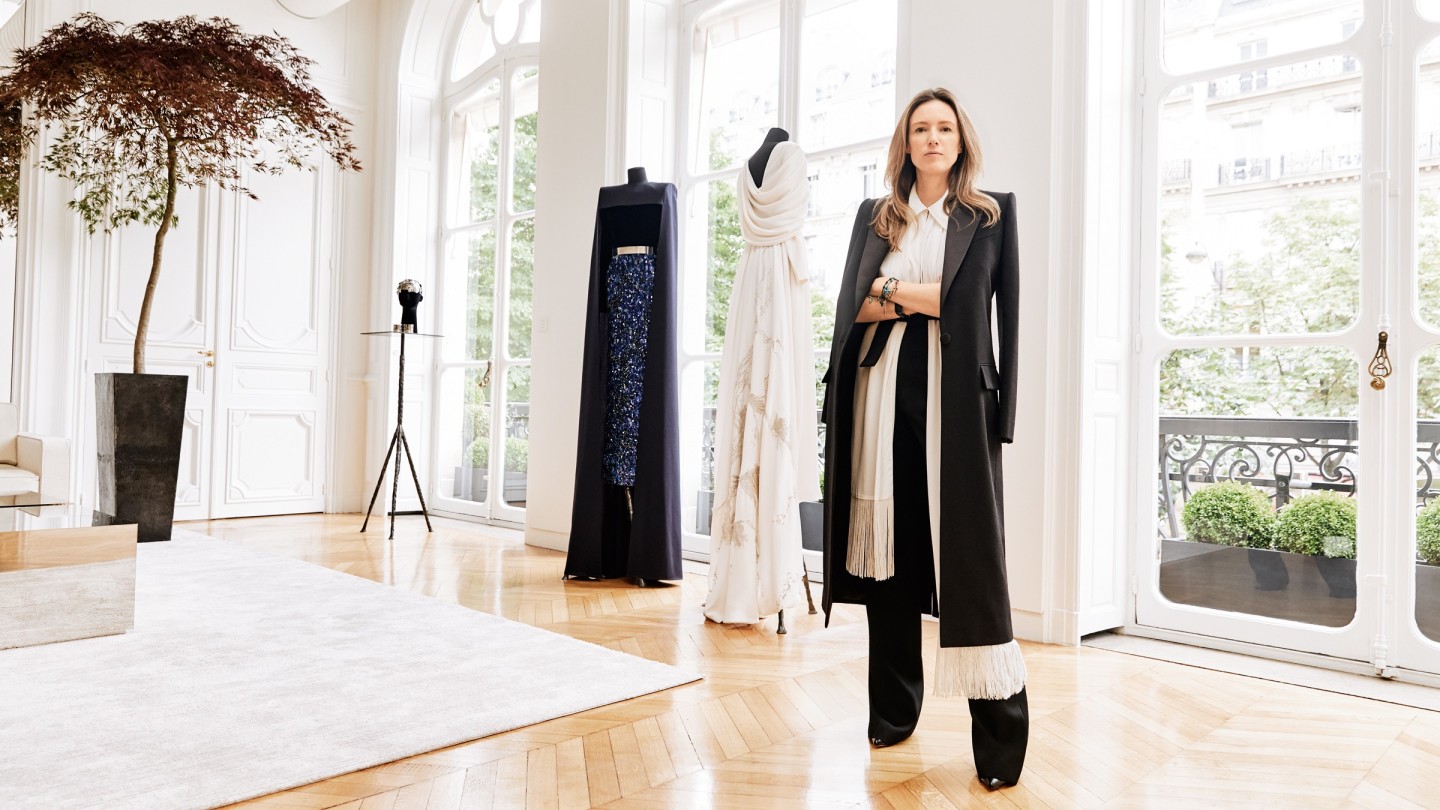
Simply sign up to the Fashion myFT Digest -- delivered directly to your inbox.
In many ways, Clare Waight Keller is the antithesis of the modern fashion designer. She doesn’t court publicity. Or blast social media with tales of her celebrity associations. She doesn’t star in branded videos espousing her point of view.
Last May, the Birmingham-born designer was made creative director of Givenchy and charged with oversight of the house’s entire output, from couture to men’s and women’s ready-to-wear, accessories and fragrance. Such a full command of the creative direction of a brand makes her a rarity in fashion, on a par with Hedi Slimane at Céline or Alessandro Michele at Gucci. Yet, despite the impeccable credentials of a master’s degree in knitwear from the Royal College of Art, stints at Calvin Klein, Ralph Lauren, Pringle and Gucci and a successful six-year tenure as creative director of Chloé under her belt, her appointment came as a surprise. In the “look-at-me” world of fashion, Waight Keller has tended to stay under the radar, eschewing the fashion party circuit to get back home to her family in London, from where she commutes to Paris each week. She has built her career on delivering confident collections without fuss or clamour.
Things changed, however, on May 19 this year, when the softly spoken mother of three dressed Meghan Markle, now the Duchess of Sussex, in a showstoppingly minimal bateau-neck silk-cady wedding gown for her marriage before a global audience of 1.9 billion viewers, and became the subject of a surge of Google searches. Even at Windsor she was an inconspicuous presence: the eagle-eyed will have just spotted her in the footage, standing in the shadows making final adjustments to the train. But in those short minutes she became a household name.
“It was a dream to work on a project like that, an extraordinary experience to go through. You get that once in your lifetime,” says the designer, sitting in the Givenchy headquarters on Avenue George V, in the very same atelier space used by its late founder Hubert de Givenchy for his own fittings. “The impact is difficult to fathom when you’re in the process of doing it,” she adds. “I was focused on creating the dress and making her day special. It’s only afterwards, when you see the global explosion of things, that you realise how enormous it is. It’s very humbling, an incredible honour to be part of a moment in history – as is being given this job. I’m going to be part of the brand’s history, so it’s been quite a phenomenal year.”
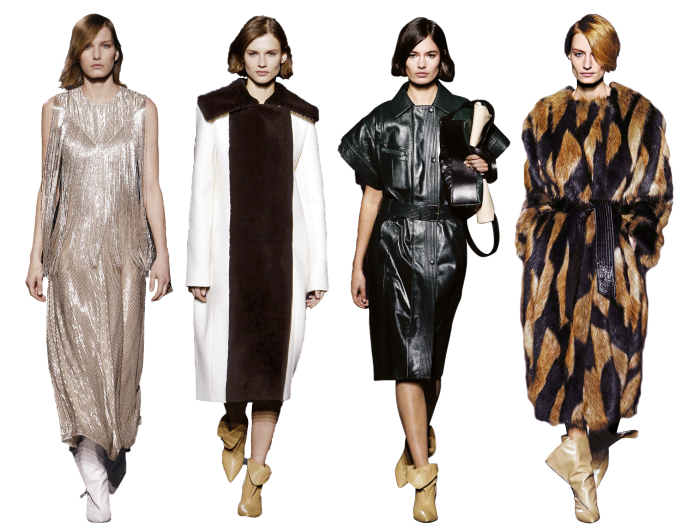
Hasn’t it just? Watching Waight Keller in her new role has been an unexpected delight. In a matter of months, the designer has established her Givenchy with assurity, confidence and modernity. She has combined the women’s and men’s collections in one conjoined vision. She has revamped the maison’s haute-couture atelier, which for five years had been working only on select projects, despite never having personally done couture before. Meanwhile, she’s delivered that all-important “new bag”, the GV3 (€1,590) – a chic 1970s-style cross-body number with a chunky brass chain and vintage-style clasp – which has reminded everyone of her talent, honed at Chloé, for hit accessories. And she has parlayed the house’s fabled legacy for haute bourgeois elegance with a wearable aesthetic that incorporates the sticky business of sneakers and sweatshirts.
“Clare has a very modern way of approaching design and creativity,” says Sidney Toledano, who leads the LVMH fashion group that includes Givenchy, Loewe and Céline. “She is the perfect balance of dream and rationality. She always thinks of how the clothes she creates will be worn by the actual consumer, while building a powerful brand story that connects Givenchy’s past to its future. But mostly, she is a beautiful person, who manages to balance her personal and professional life with drive, focus and a whole lot of magic.”
“We should have our best year ever,” agrees Philippe Fortunato, Givenchy’s chief executive, of the new buzz about the house. The company does not release individual financial statements, but sources close to it put annual revenues at between $400m and $600m. “The first semester will be a record high,” Fortunato adds, noting that the house has received “the highest number of couture orders we have ever accomplished”.
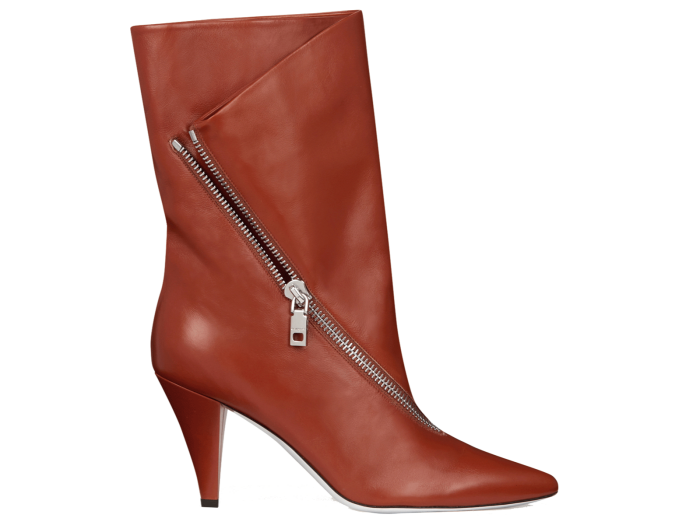
Interest in the maison’s ready-to-wear collections also received a substantial boost from the royal endorsement, with sales up by more than 300 per cent at Net-a-Porter in the week after the wedding. Matchesfashion.com also saw a spike. “We’ve noticed increased interest and sales since Clare has been on board at Givenchy,” explains Natalie Kingham, fashion and buying director. “The collection is very elevated and appeals to a strong, glamorous woman – we’ve had great success with the gowns, but particularly following the wedding, when sales were close to 80 per cent up on last year.” Easy-dressing pieces such as the silk-georgette blouses, tailored trousers and bags have also been popular, she adds. “Clare has an interesting point of view that speaks to our customers, so we’re excited to see what lies ahead.”
Mr Givenchy himself dressed Audrey Hepburn and Jackie Kennedy Onassis – pictures of classic elegance and refinement. By contrast, Waight Keller’s predecessor Riccardo Tisci, who was at the helm for 12 years, dressed Kim Kardashian, Madonna and edgily glamorous models like Mariacarla Boscono and Joan Smalls in his darkly gothic designs. Waight Keller’s challenge is to combine elements of both these aesthetics at Givenchy while simultaneously carving her own signature on the house.
“That’s what’s fabulous about this brand: we go from someone who is as huge as Beyoncé to a completely different world, that of the Duchess of Sussex. But it shows both spectrums.” What her most famous clients have in common is an aura and charisma. “Beyoncé really embraces her body. She’s her own woman: very strong and empowered.”

Waight Keller has also relished the opportunity to investigate the more serious attitude that Givenchy must offer. “It was a big leap,” she says of how her work has, quite literally, become more tailored. “Coming from Chloé, from bohemia and flou and really no tailoring, it opened up a door because [although I have the tailoring in my past] I’ve never really been able to express it in Paris. And the fact that the house has this ‘dark drama’ has given me an opportunity to go for that too.”
Indeed, her autumn/winter show was all drama, staged on a twilit set with looks recalling the mood and the contrasts in post-Wall Berlin. It had a polished appearance yet left a gritty aftertaste. Key pieces included “sleazy leathers” (€4,290), fluid graphic dresses with asymmetric hems (€7,490), zippered boots (€1,295) and huge faux-fur coats (€2,990), whose fluffy fabrics took several months to develop and looked uncannily real. For Waight Keller, the coats symbolised a gradual shift in terms of what makes a luxury item and also acknowledged a sea change in consumer attitudes. Although she rarely consults her twin teenage daughters on matters of design, she has noted how the next generation is more ethically minded. “Kindness is a big deal for them.” Are they vegan? “No,” she says. “But they’re definitely going that way.”
Of the code she is developing at Givenchy, Waight Keller is clear. “It’s that sense of power and drama – and confidence. I think that comes through in both the men’s and the women’s collections, and I feel very strongly about it. But there’s an element of sportiness too: we’ve still got the sweatshirts, we’ve still got the T-shirts, and they’re a powerful part of the brand.”
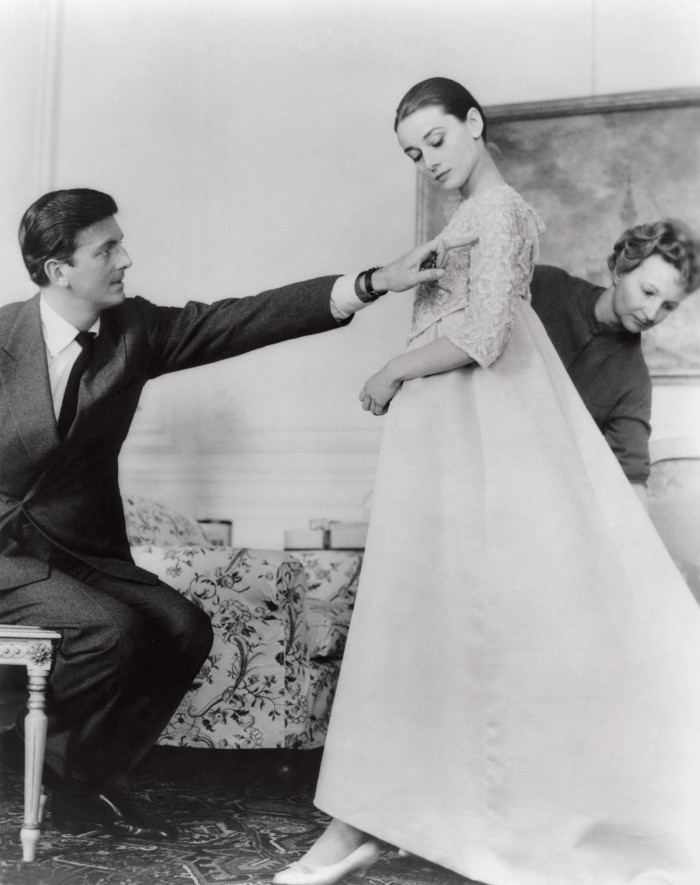
Under Tisci, sneakers and streetwear were instrumental in taking the house from the point of bankruptcy in 2005 to where it is today. In fact, the Italian could be credited with being among the first designers to have truly understood the value of streetwear within the modern luxury portfolio. Waight Keller’s challenge has been to temper this casualisation. Sneakers are an inevitable feature of the “high-low” mix we all wear, she says. “But I do feel that the tide is turning there.”
Are we returning to more tailored looks? “Yes, but I don’t think tailoring is necessarily confined to a suit,” she replies. “It’s about a structured piece.” By way of example she points to the “little cape dresses” she introduced at couture, but which are percolating through her design process. Ditto the sharp shoulder construction that she has made her signature, both on her blazer suiting and in the chic long lines of her silvery eveningwear (€35,000). “It’s about providing something very defined but ultimately feminine.”
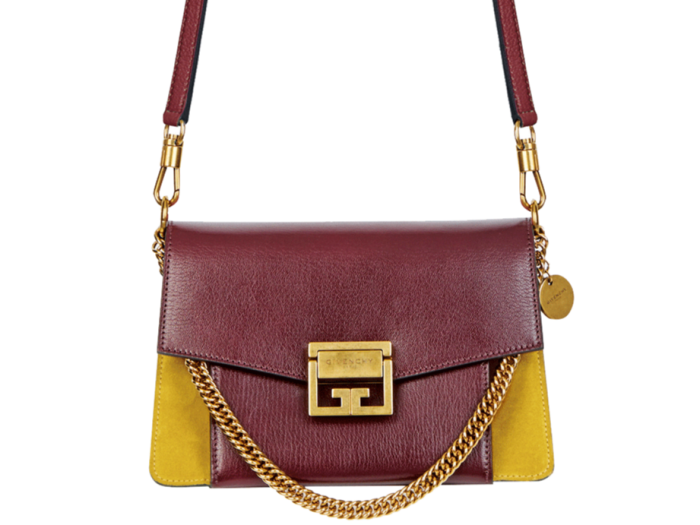
Today, Waight Keller is wearing an oily black leather pencil skirt with an elasticated waist, from her pre-fall collection, low stiletto heels and a white T-shirt – Parisienne sophistication, with a lick of kohl-rimmed London cool. As a female designer, Waight Keller must be a visible advocate for the brand she oversees, but in a career that has incorporated such varied points of view – floaty bohemia at Chloé, heritage knitwear at Pringle, preppy chic at Ralph Lauren and cool, calm minimalism at Calvin Klein – I wonder to what extent she feels the need to wear the looks herself?
“I actually like them,” she says. “As a woman, I really buy the clothes, I use the bags… so the importance of it really being right commercially is very in tune with my everyday life. I say to my design team, ‘Watch when you send this through the production cycle, because I’m going to be buying it, so it has to be exactly how I want it.’”
She’s not kidding, according to Toledano. “You will always find her in her studio touching fabrics, trying on accessories, projecting herself into the pieces,” he says. “She is the most demanding client of her own aesthetic and that informs how real her pieces become and the appeal they have to the largest audiences.”
Is she demanding? “I’m very meticulous,” she concedes. “Even just working on the couture show this week. It’s so sharp and so graphic… and purity is one of the hardest things to achieve. I’ve got a real love for purity – even in architecture; I can really swoon at a Tadao Ando building or a James Turrell artwork. The poetry in something simple can be quite mind-blowing.”
Her obsession with the details was one of the things that most impressed Fortunato in her interview for the role. “She sees the client as a very important part of the equation,” he says. “It’s not creativity for the sake of creativity, it’s creativity at the service of a very sophisticated client. She spends a lot of time on the function. The handbag needs to be practical. The clothes have to be worn on a daily basis, whether for work or ceremony.”
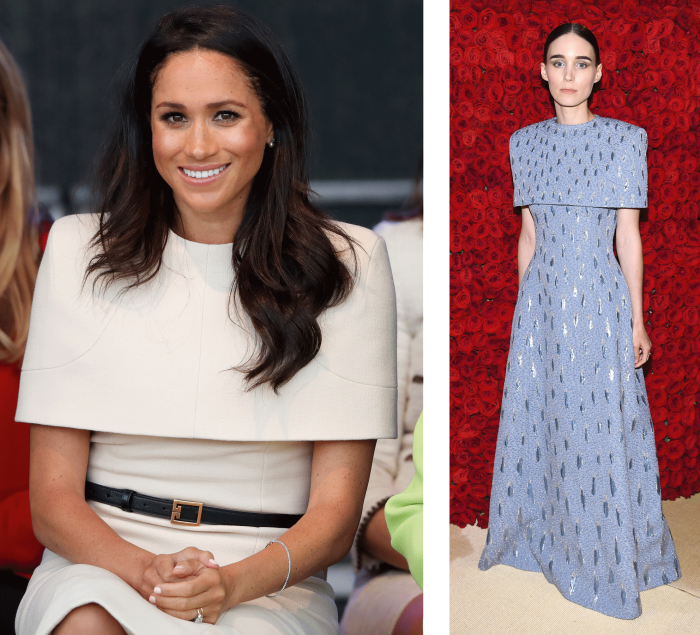
“In the production process for a new bag, I’ll take a prototype and find what’s annoying about it,” the designer says. “Can we change the direction on the zip, for instance. I have this obsession that you need to be able to approach a bag with one hand. If you’ve got to put something down and then open it, that’s annoying. It’s instinctive things that, as a woman using it, you know.”
Having now established the brand codes and nailed the shows, where is the focus next? Fortunato says that leather goods (ie handbags) are “something we will be developing in a very strong way”. And footwear will also be key. “Shoes are an interesting part of the business,” he says. “We want to develop a sophisticated segment that complements the sneaker business that is extremely strong with us.” The autumn/winter 2018 slouchy boots (from €1,295) with their zip-away cuffs, and the strappy stilettos (from €650) have all the makings of that.
A scent is in the air too, with the first perfume that Waight Keller has ever fully overseen launching this month. It’s consistent with the plan to make the brand more cohesive. “I really wanted to have much more coordination between fragrance and fashion, which were disparate for some time,” says Fortunato. “We want to make sure that Clare has a strong point of view.”
That point of view will be difficult to miss: she’s just signed off the autumn campaign, has a say in new store designs and steers the childrenswear collections in addition to the other 10. Has the power gone to her head? “No,” she laughs. “But, you know what, I do love having it, because it’s important that the whole environment works together.”
Both Waight Keller and Alessandro Michele worked under Tom Ford, which perhaps hints at a root of their clear-minded focus. “Over my career I’ve been exposed to a lot of change between aesthetics and houses – and even within houses,” she says. “When I joined Tom at Gucci in 2000, he was going through a dramatic change, buying Saint Laurent and then getting involved in that. We went from just being Gucci as a brand to Gucci Group, which changed everything. That was fascinating. You realised the power of [total control] because the vision, then, is crystal clear – and the clearer you are, the easier it is for a consumer to understand it and aspire to it. Tom was one of the frontrunners in building that type of vision. Obviously Ralph Lauren had it as well, but he had already built it by the time I got there, whereas Tom was creating it in front of me.”
She is also thankful for her experience at Chloé, which “was much more about being very feminine and accessible and really related to women in a very direct way. It was the sole focus of everything we did.” It also placed an imperative on technical skill. “It was the first time I’d really been exposed to a full atelier, working with it on a daily basis, and it brought me new skills and knowledge.”
At Givenchy, all her skills can be synthesised, and Waight Keller is only just getting started. The London store is opening at the end of this year, which presents the designer with a rare opportunity. “It is personally a fantastic moment, because normally I don’t get to do something like that in my home town,” she says, adding, “There will also be something coming in the next few months that will really break from the past.”
Her autumn/winter couture show was dedicated to the house’s founder, about whom she is faultlessly deferential. “It’s a delicate balance,” she says of the tightrope a designer must walk when directing a heritage brand with such a powerful founder narrative. “But, at the same time, we’re in the 21st century, so it has to evolve and continue to be at the pinnacle of relevance at all times. Obviously there is a legacy; I’ve been respectful of that. But it’s an opportunity now to open up into a completely new era as well. My last couture show was obviously an homage, but it also closed that door, so that I can really go and take Givenchy to new heights.”
For too long, Clare Waight Keller was reluctant to step out of the shadows. Now she has, there’s no chance she’ll turn back.
Comments